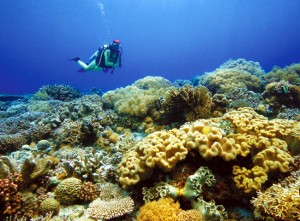Marine scientists leave for Tubbataha
A team of marine scientists and divers from the Bureau of Fisheries and Aquatic Resources (BFAR) left for the Tubbataha Reefs Thursday to assess the damage caused by the grounding of a US warship there a week ago.
The team will try to determine what needs to be done to revive some of the “wounded” coral reefs, according to BFAR Assistant Director Benjamin Tabios.
But the team may have to wait until the USS Guardian is removed from the reef before it can take a closer look at the damage, Tabios said.
Philippine and US authorities said the removal of the vessel may start in early February, with the arrival of two salvor ships from Singapore to lift the Guardian and load it onto a barge.
No price tag
Tabios said the damage reported by the Philippine Coast Guard at 1,000 square meters of the Tubbataha Reefs was just a “rough estimate.”
Asked how much the country had lost in the accident, Tabios said it would be impossible to put a monetary value to the damage to the reefs.
“You can’t put a price tag on it. Yes, you would know the damage by size and shape. But you can’t estimate it in terms of pesos. The reefs there are invaluable,” Tabios said.
He said the ecosystems in Tubbataha, with its rich marine biodiversity, support aquatic life across the Philippines.
He explained that fishermen operating near the Tubbataha get a good catch because pelagic fishes like tamban and mackerel and other highly migratory species like tuna get their food from the reefs.
“To a certain degree, we lost part of our biodiversity bank,” Tabios said.
He said the fines to be imposed on the US Navy could not compensate for the losses.
“But this is a way to avoid any similar incident in the future,” he said.
